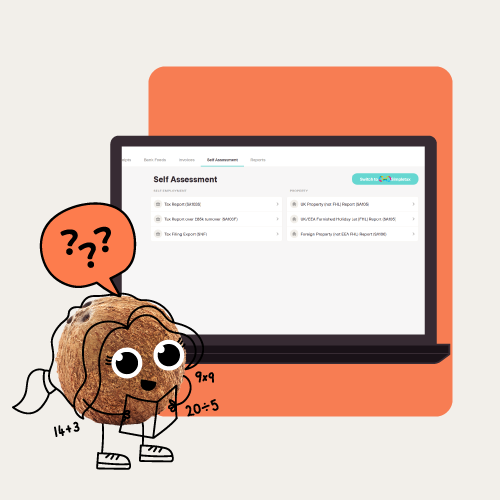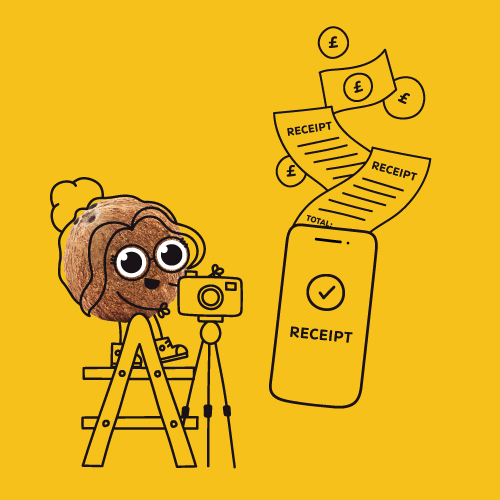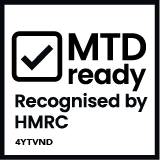Ever wondered how much money you can earn from a hobby before paying tax on it?
Got a side hustle alongside your main employment, but not sure if you need to declare the income to HMRC?
Good news! Due to something called the ‘trading allowance’, you can get up to £1,000 tax relief on these kinds of income, every tax year. Which means that you may not have to pay as much tax as you think—if any at all.
But there are a few things you should be aware of when it comes to claiming this tax relief. Below we’ll cover everything you need to know about HMRC’s trading allowance, to ensure you’re using it both correctly and effectively.
Before we start
If you're feeling uncertain about your finances, we strongly recommend you work with an accountant. Not only will they save you time and stress, but accountants are fully aware of what additional allowances can be claimed for tax—so can often help you get lower tax bills than if you’d completed the forms yourself.
And don’t forget: if you have one already, you can invite your accountant to Coconut through the app. Once your accountant has accepted your invitation, they’ll be able to view all of your business activity and bookkeeping data whenever they need to, via the Accountant Portal. Meaning no endless back-and-forth emails, no frantic searching for receipts, and no stress—for you or your accountant.
What exactly is the trading allowance?
The trading allowance is tax relief of up to £1,000 a year for individuals with income from things like self-employment, ‘side hustles’, or casual services (think: babysitting, gardening etc).
There is also a separate allowance for those with income from property.
Can I claim the £1,000 trading allowance?
If you’re a sole trader or earn some kind of side income alongside your usual employment, then it’s likely that you will be eligible to claim the £1,000 trading allowance (though it may not always be in your best financial interest to do so; more on that below).
There are a few instances in which you cannot use the trading allowance—for example, if your trading income is coming from:
- a company that you or someone connected to you owns or controls
- a partnership where you or someone connected to you are partners
- your employer or the employer of your spouse or civil partner
The trading allowance is also not available to partnerships, partners, or limited companies.
What if I have trading income of £1,000 or less?
If your gross trading income for the tax year (i.e. the amount you earned from your self-employment / side gig before any expenses have been deducted) is £1,000 or less, then all of this income can be covered by the trading allowance—meaning you won’t have to pay any tax on it.
This might apply to you if you have a side hustle alongside your usual employment.
If this is the case for you, you don't have to register as self-employed, and you don't need to do a tax return, unless:
- you’re not eligible to use the allowance (see above)
- there are other reasons why you need to do a Self Assessment
- you choose to do a Self Assessment, e.g. because you want to pay voluntary Class 2 National Insurance Contributions to build up your entitlement to benefits such as the state pension.
If you do need to complete a Self Assessment and want to claim the trading income allowance, then you’ll be able to do so in the tax return form.
See our full guide to filing a Self Assessment.
What if I have trading income of more than £1,000?
If your trading income comes in at more than £1,000, you’ll need to register as self-employed and do a Self Assessment tax return.
You can still claim the trading allowance if you so wish (there’s a place to do this in the form), but it’s worth taking a moment to figure out if this is the best strategy for you. This is because you must choose between using the trading allowance and claiming your expenses. You can’t do both.
You’ll want to make sure that you’re claiming as much tax relief as you can, so if your expenses come in at more than £1,000 for the tax year, then you should claim those rather than the trading allowance.
Can I claim expenses AND the trading allowance?
No, you can’t. You can decide which one you want to use each tax year, so the best thing to do is keep track of your expenses, and if they're less than £1,000, use the allowance instead.
When to NOT to claim the trading allowance
There are a couple of key mistakes to avoid when using the £1,000 trading allowance:
- Using the trading allowance when it would be better to claim your expenses: if you have business expenses of more than £1,000, you will be better off deducting those from your income, rather than the trading allowance. Otherwise you could be paying more tax than you need to!
- Using the trading allowance when you have made a loss: if your expenses in a given tax year are greater than your income, you’re better off filling in a Self Assessment tax return and claiming the losses rather than using the trading allowance (you can’t use the trading allowance to make a loss).
How can I check whether my expenses were over £1,000?
You should always keep records of your income and expenses, so that you can work out whether or not you are entitled to use the trading allowance, and if so, whether you want to do so. You should also keep a copy of your receipts, in case HMRC asks to see them later (read more about this in our article about allowable expenses).
Coconut’s simple accounting & tax app makes all of this really easy. We’ll help you track and categorise your income and business expenses throughout the year, so that you’ll always know how much is coming in and going out. You’ll also be able to take photos of your receipts, link them to specific transactions, and jot down handy reminder notes for later—meaning that all of your paperwork is safely stored in one place.
Haven’t got your Coconut account yet? Sign up now to get your 30-day free trial.
Disclaimer:
The content included in this guide is based on our understanding of tax law at the time of publication. It may be subject to change and may not be applicable to your circumstances, so should be regarded as a guide only. You are responsible for complying with tax law and should seek independent advice.











